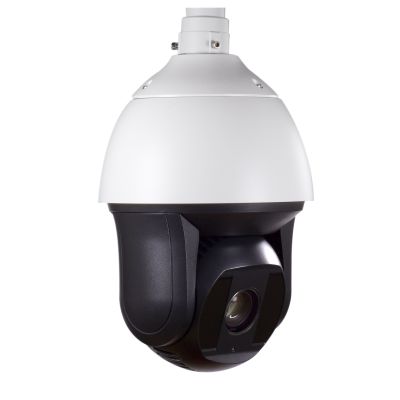Colorado MED Compliance - Cannabis Security
Colorado MED Compliant Surveillance
Key Requirements
- 40 days of retained footage
- "Camera coverage must enable recording of the customer(s) and employee(s) facial features with sufficient clarity to determine identity"
- "All camera views of all Limited Access Areas must be continuously recorded 24 hours a day. The use of motion detection is authorized when a Licensee can demonstrate that monitored activities are adequately recorded."
Here is the full text pertaining to surveillance systems as written in 1 CCR 212-2 R 306
Basis and Purpose – R 306 The statutory authority for this rule is found at subsections 12-43.4-202(2)(b),12-43.4-202(2)(d), and 12-43.4- 202(3)(a)(V), and section 12-43.4-701, C.R.S. Authority also exists in the Colorado Constitution at Article XVIII, Subsection 16(5)(a)(VI). The purpose of this rule is to ensure adequate control of the Licensed Premises and Retail Marijuana and Retail Marijuana Product contained therein. This rule also establishes the minimum guidelines for security requirements for video surveillance systems for maintaining adequate security.
R 306 - Video Surveillance
A. Minimum Requirements. The following video surveillance requirements shall apply to all Retail Marijuana Establishments.
1. Prior to exercising the privileges of a Retail Marijuana Establishment, an Applicant must install a fully operational video surveillance and camera recording system. The recording system must record in digital format and meet the requirements outlined in this rule.
2. All video surveillance records and recordings must be stored in a secure area that is only accessible to a Licensee’s management staff.
3. Video surveillance records and recordings must be made available upon request to the Division, the relevant local jurisdiction, or any other state or local law enforcement agency for a purpose authorized by the Retail Code or for any other state or local law enforcement purpose.
4. Video surveillance records and recordings of point-of-sale areas shall be held in confidence by all employees and representatives of the Division, except that the Division may provide such records and recordings to the relevant local jurisdiction, or any other state or local law enforcement agency for a purpose authorized by the Retail Code or for any other state or local law enforcement purpose.
B. Video Surveillance Equipment
1. Video surveillance equipment shall, at a minimum, consist of digital or network video recorders, cameras capable of meeting the recording requirements described in this rule, video monitors, digital archiving devices, and a color printer capable of delivering still photos.
2. All video surveillance systems must be equipped with a failure notification system that provides prompt notification to the Licensee of any prolonged surveillance interruption and/or the complete failure of the surveillance system.
3. Licensees are responsible for ensuring that all surveillance equipment is properly functioning and maintained, so that the playback quality is suitable for viewing and the surveillance equipment is capturing the identity of all individuals and activities in the monitored areas.
4. All video surveillance equipment shall have sufficient battery backup to support a minimum of four hours of recording in the event of a power outage. Licensee must notify the Division of any loss of video surveillance capabilities that extend beyond four hours.
C. Placement of Cameras and Required Camera Coverage
1. Camera coverage is required for all Limited Access Areas, point-of-sale areas, security rooms, all points of ingress and egress to Limited Access Areas, all areas where Retail Marijuana or Retail Marijuana Product is displayed for sale, and all points of ingress and egress to the exterior of the Licensed Premises.
2. Camera placement shall be capable of identifying activity occurring within 20 feet of all points of ingress and egress and shall allow for the clear and certain identification of any individual and activities on the Licensed Premises.
3. At each point-of-sale location, camera coverage must enable recording of the customer(s) and employee(s) facial features with sufficient clarity to determine identity.
4. All entrances and exits to the facility shall be recorded from both indoor and outdoor vantage points.
5. The system shall be capable of recording all pre-determined surveillance areas in any lighting conditions. If the Licensed Premises has a Retail Marijuana cultivation area, a rotating schedule of lighted conditions and zero-illumination can occur as long as ingress and egress points to Flowering areas remain constantly illuminated for recording purposes.
6. Areas where Retail Marijuana is grown, tested, cured, manufactured, or stored shall have camera placement in the room facing the primary entry door at a height which will provide a clear unobstructed view of activity without sight blockage from lighting hoods, fixtures, or other equipment.
7. Cameras shall also be placed at each location where weighing, packaging, transport preparation, processing, or tagging activities occur.
8. At least one camera must be dedicated to record the access points to the secured surveillance recording area.
9. All outdoor cultivation areas must meet the same video surveillance requirements applicable to any other indoor Limited Access Areas.
D. Location and Maintenance of Surveillance Equipment
1. The surveillance room or surveillance area shall be a Limited Access Area.
2. Surveillance recording equipment must be housed in a designated, locked, and secured room or other enclosure with access limited to authorized employees, agents of the Division and relevant local jurisdiction, state or local law enforcement agencies for a purpose authorized by the Retail Code or for any other state or local law enforcement purpose, and service personnel or contractors.
3. Licensees must keep a current list of all authorized employees and service personnel who have access to the surveillance system and/or room on the Licensed Premises. Licensees must keep a surveillance equipment maintenance activity log on the Licensed Premises to record all service activity including the identity of the individual(s) performing the service, the service date and time and the reason for service to the surveillance system.
4. Off-site Monitoring and video recording storage of the Licensed Premises by the Licensee or an independent third-party is authorized as long as standards exercised at the remote location meet or exceed all standards for on-site Monitoring.
5. Each Retail Marijuana Licensed Premises located in a common or shared building, or commonly owned Retail Marijuana Establishments located in the same local jurisdiction, must have a separate surveillance room/area that is dedicated to that specific Licensed Premises. Commonly owned Retail Marijuana Establishments located in the same local jurisdiction may have one central surveillance room located at one of the commonly owned Licensed Premises which simultaneously serves all of the commonly-owned retail facilities. The facility that does not house the central surveillance room is required to have a review station, printer, and map of camera placement on the premises. All minimum requirements for equipment and security standards as set forth in this section apply to the review station.
6. Licensed Premises that combine both a Medical Marijuana Business and a Retail Marijuana Establishment may have one central surveillance room located at the shared Licensed Premises. See Rule R 304 – Medical Marijuana Business and Retail Marijuana Establishment: Shared Licensed Premises and Operational Separation.
E. Video Recording and Retention Requirements
1. All camera views of all Limited Access Areas must be continuously recorded 24 hours a day. The use of motion detection is authorized when a Licensee can demonstrate that monitored activities are adequately recorded.
2. All surveillance recordings must be kept for a minimum of 40 days and be in a format that can be easily accessed for viewing. Video recordings must be archived in a format that ensures authentication of the recording as legitimately-captured video and guarantees that no alteration of the recorded image has taken place.
3. The Licensee’s surveillance system or equipment must have the capabilities to produce a color still photograph from any camera image, live or recorded, of the Licensed Premises.
4. The date and time must be embedded on all surveillance recordings without significantly obscuring the picture.
5. Time is to be measured in accordance with the official United States time established by the National Institute of Standards and Technology and the U.S. Naval Observatory at: http://www.time.gov/timezone.cgi?Mountain/d/-7/java
6. After the 40 day surveillance video retention schedule has lapsed, surveillance video recordings must be erased or destroyed prior to: sale or transfer of the facility or business to another Licensee; or being discarded or disposed of for any other purpose. Surveillance video recordings may not be destroyed if the Licensee knows or should have known of a pending criminal, civil or administrative investigation, or any other proceeding for which the recording may contain relevant information.
F. Other Records
1. All records applicable to the surveillance system shall be maintained on the Licensed Premises. At a minimum, Licensees shall maintain a map of the camera locations, direction of coverage, camera numbers, surveillance equipment maintenance activity log, user authorization list, and operating instructions for the surveillance equipment.
2. A chronological point-of-sale transaction log must be made available to be used in conjunction with recorded video of those transactions.
- SKU: PTZ36X4MP
- 1080p Resolution
- 36x Zoom
- 600ft Night Vision
- 360˚ Rotation
- Auto Tracking
- Weatherproof
- Easy to Install
- Smart Phone Access
- Free Support
- 3 Year Warranty
SKU: BFX8MP-4-NC
- 8MP Resolution
- IP66
- 24/7 Full Color Video
- Intelligent Detection
- Micro SD Card Slot
- Power Over Ethernet
- Supports 3 Streams
- 3 Year Warranty



